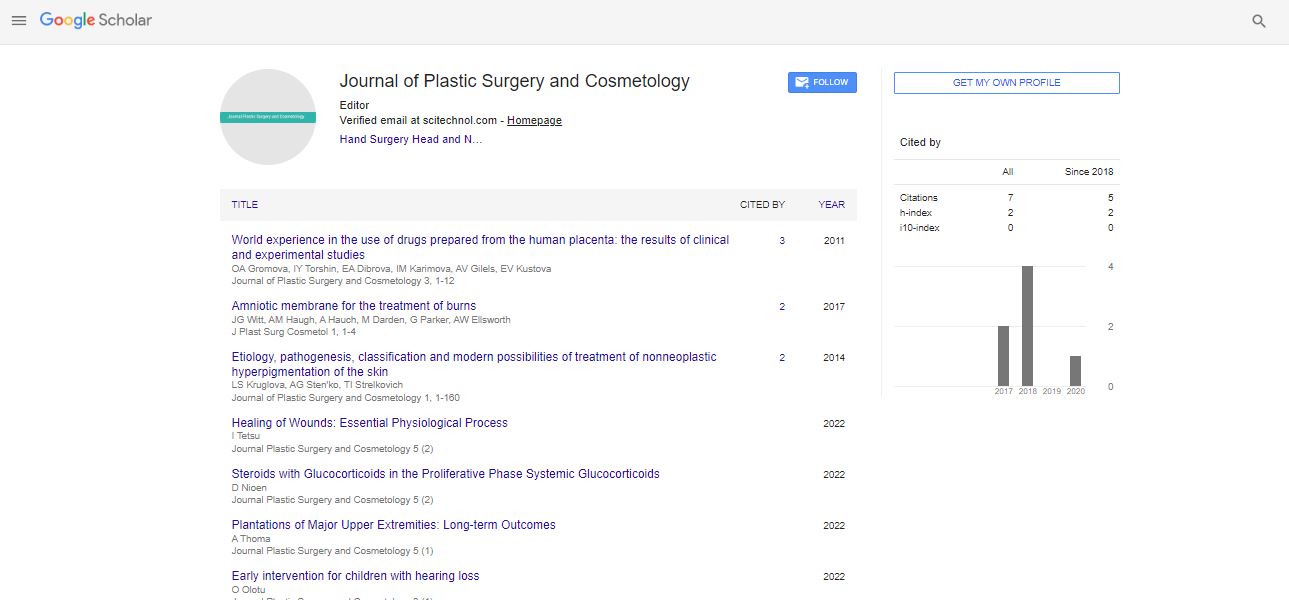Rehabilitation in pediatric oncology practice after partial resection of the jaws
Anna Dudaeva, Nikolay Grachev, Igor Vorozhcov, Nikolay Markov and Natalia Babaskina
Dmitry Rogachev National Medical Research Center Of Pediatric Hematology, Oncology and Immunology, Russia
: J Plast Surg Cosmetol
Abstract
Statement of the Problem: It is well known that with advances in oncology, the survival rate of paediatric patients with diagnosed tumours of the jaw has risen to 5 years or more, with a survival rate of 82%. However, it is worth noticing that the annual increase in disease is 1-2% (5-12% is in the head and neck region). Due to the long-term consequences, both functional, such as impaired speech, chewing, swallowing, and secondary deformities, as well as psychological and social, there is an urgent need for full rehabilitation of patients and their families. Also, we have a problem that can be identified as one of the most serious issues today. Rehabilitation of children who have undergone surgery as well as chemoradiation increases the risks of complications and narrows the possibilities of rehabilitation measures. The purpose of this study is to describe the experience of Rehabilitation in pediatric oncology practice after partial resection of the jaws. We divided the patients into 3 age groups, in which the patients were divided according to the main growth phases. The study involved 114 patients. Taking into account the fact of the potential for growth, an algorithm was built on the need for various rehabilitation measures for each age group. To date, research is ongoing, but we are already taking into account the main aspects and building an algorithm for diagnosis and rehabilitation. We have also developed and put into practice "growing prostheses" and " free condylar head temporomandibular joints". The growing endoprosthesis does not delay the potential growth of the facial skeleton on the healthy side. Depending on the patient's age and medical history, we try to design the prosthesis so that it can "grow" along with the facial skeleton as long as possible. Findings: Rehabilitation in pediatric oncology practice is an integral part of treatment of patients with diagnosed Tumours. The growing endoprosthesis does not inhibit potential growth of the facial skeleton, preventing secondary deformities and allowing microsurgical reconstruction from the age of 12 with maximum functional and aesthetic results. The full rehabilitation of patients and their families allows us to bring children back to normal life. References 1. Dental rehabilitation after partial resection of the jaws. Stomatologiya. 2020;99(6 2):44 62. (In Russ.). 2. Case report: Fibrotic dysplasia of lower jaw - surgical treatment and rehabilitation. Head and Neck Russian Journal. 2021;2- s2.0-85107402604. 3. View of surgeon on multidisciplinary approach in pediatric hematology-oncology. Russian Journal of Pediatric Hematology and Oncology.3(2):79-86. (In Russ.).
Biography
Anna Dudeva is a highly accomplished Research Associate and Maxillofacial Surgeon at the renowned Dmitry Rogachev National Medical Research Center of Pediatric Hematology, Oncology, and Immunology. With an unwavering commitment to advancing the field of pediatric oncology, Dr. Dudeva specializes in rehabilitation following partial resection of the jaws. Driven by a profound dedication to improving the quality of life for young patients, Dr. Dudeva's research focuses on developing innovative techniques and treatments for effective rehabilitation in pediatric oncology cases. Through her extensive expertise and relentless pursuit of knowledge, she strives to enhance the post-operative recovery process and optimize outcomes for children facing challenging jaw resections.
 Spanish
Spanish  Chinese
Chinese  Russian
Russian  German
German  French
French  Japanese
Japanese  Portuguese
Portuguese  Hindi
Hindi 